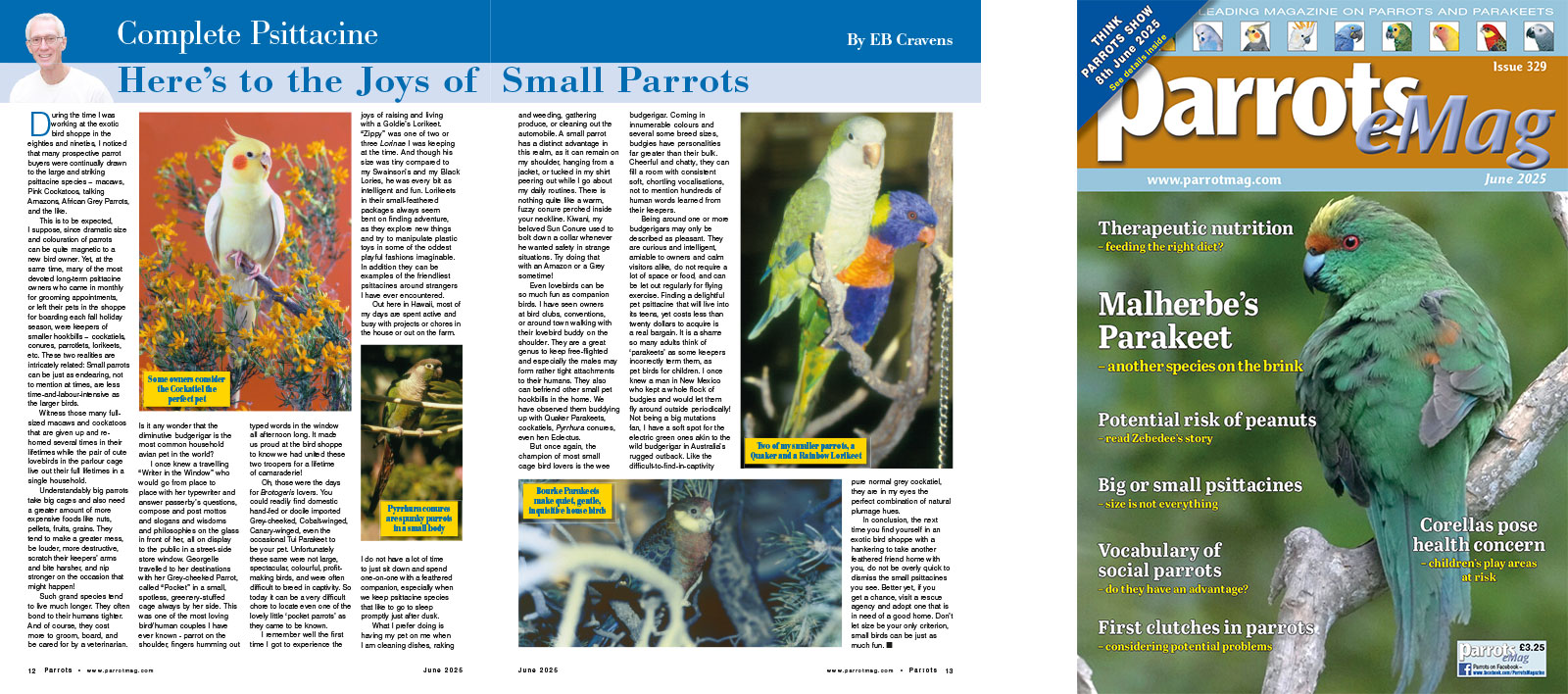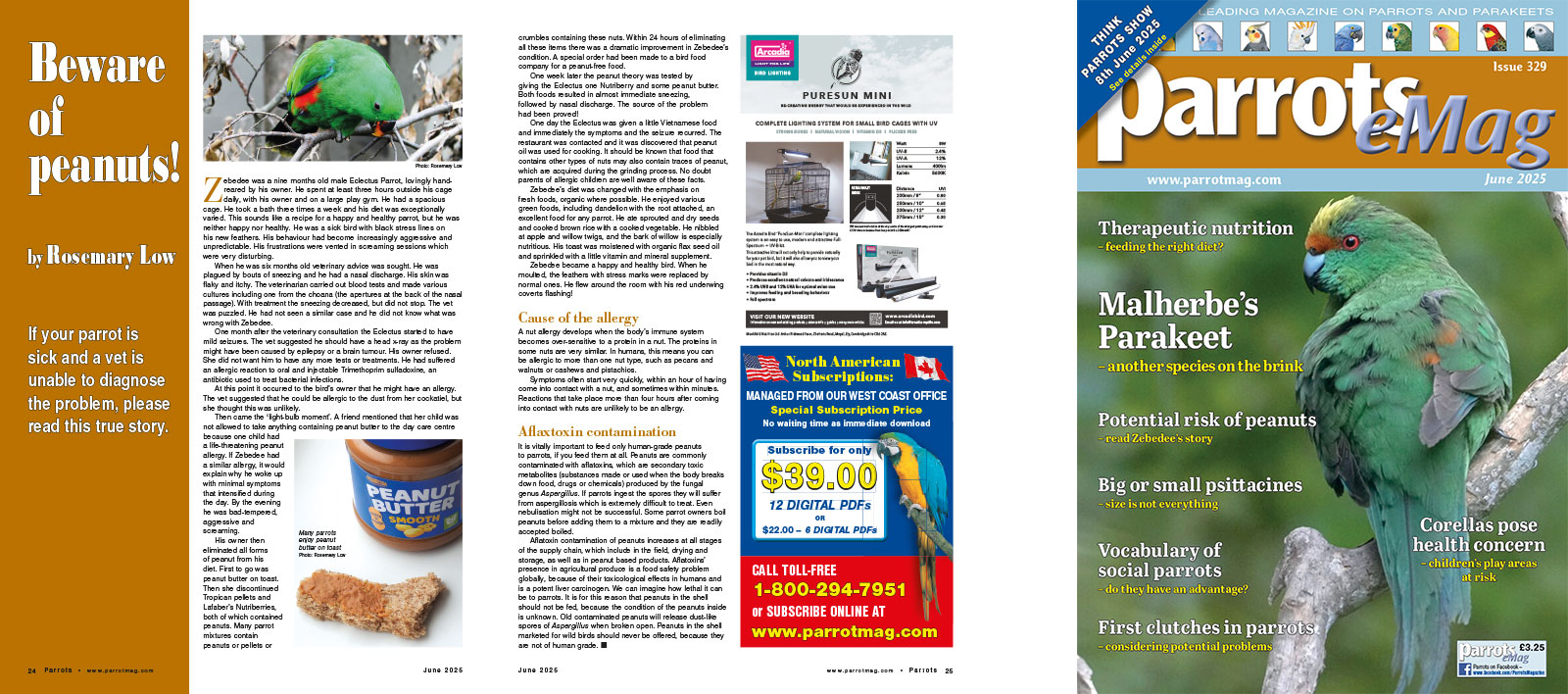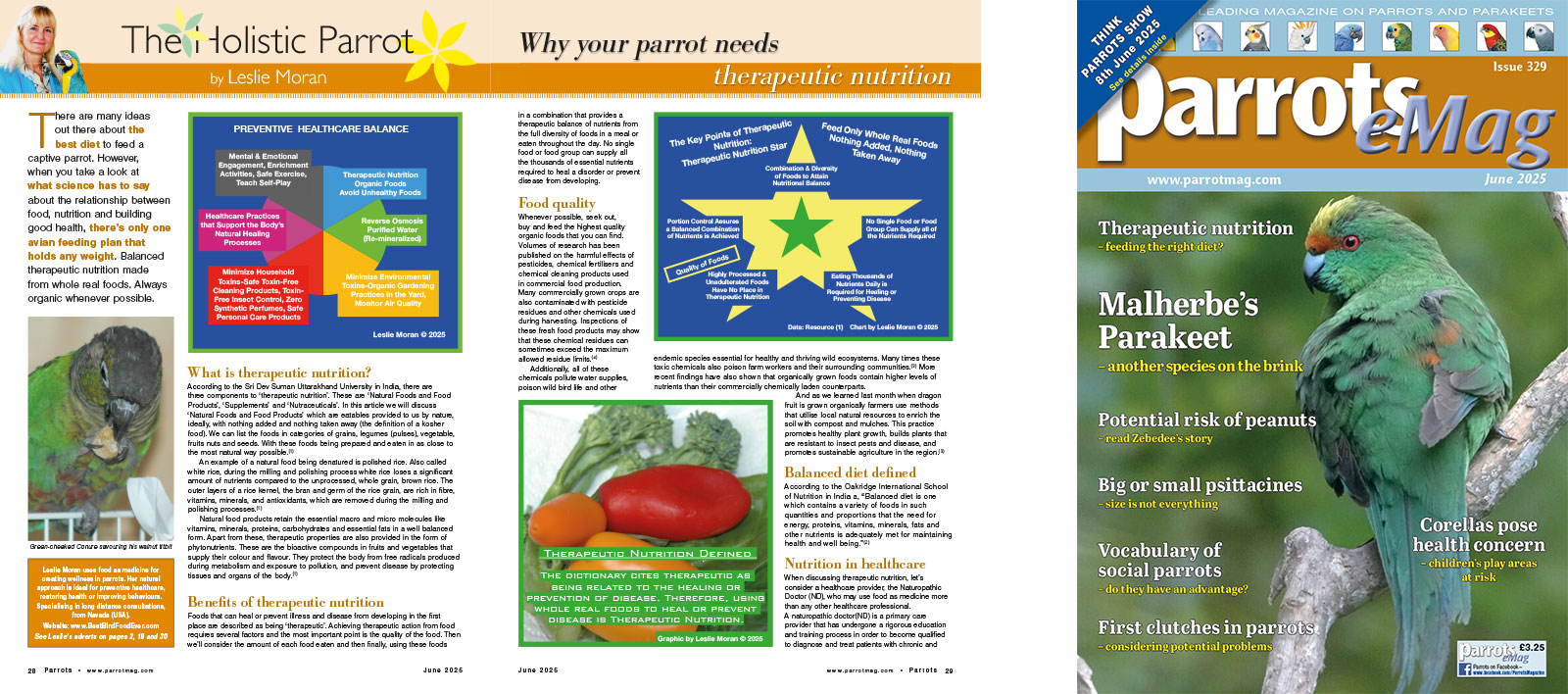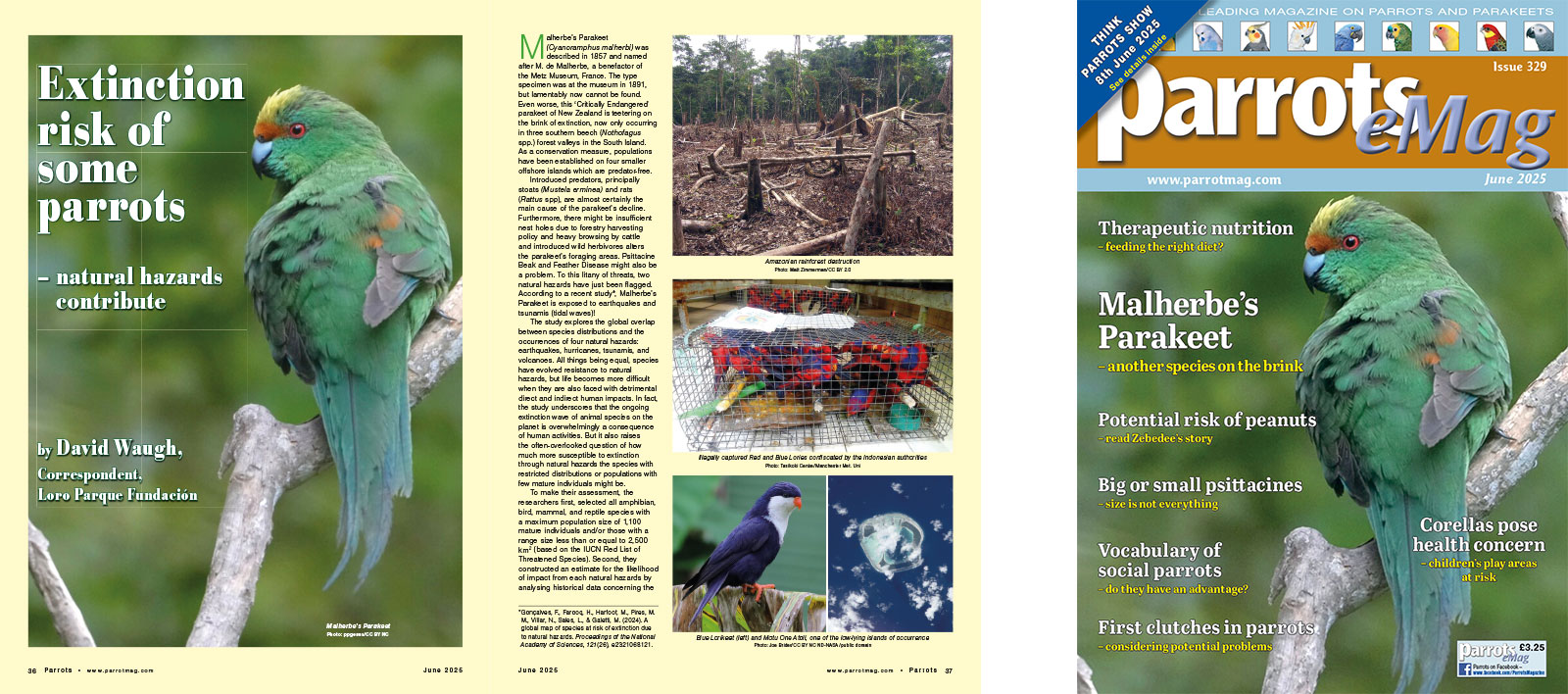
Complete Psittacine by Eb Cravens
During the time I was working at the exotic bird shoppe in the eighties and nineties, I noticed that many prospective parrot buyers were continually drawn to the large and striking psittacine species – macaws, Pink Cockatoos, talking Amazons, African Grey Parrots, and the like.
This is to be expected, I suppose, since dramatic size and colouration of parrots can be quite magnetic to a new bird owner. Yet, at the same time, many of the most devoted long-term psittacine owners who came in monthly for grooming appointments, or left their pets in the shoppe for boarding each fall holiday season, were keepers of smaller hookbills – cockatiels, conures, parrotlets, lorikeets, etc. These two realities are intricately related: Small parrots can be just as endearing, not to mention at times, are less time-and-labour-intensive as the larger birds.
Witness those many full-sized macaws and cockatoos that are given up and re-homed several times in their lifetimes while the pair of cute lovebirds in the parlour cage live out their full lifetimes in a single household.
Get your copy now

By Rosemary Low
Zebedee was a nine months old male Eclectus Parrot, lovingly hand-reared by his owner. He spent at least three hours outside his cage daily, with his owner and on a large play gym. He had a spacious cage. He took a bath three times a week and his diet was exceptionally varied. This sounds like a recipe for a happy and healthy parrot, but he was neither happy nor healthy. He was a sick bird with black stress lines on his new feathers. His behaviour had become increasingly aggressive and unpredictable. His frustrations were vented in screaming sessions which were very disturbing.
When he was six months old veterinary advice was sought. He was plagued by bouts of sneezing and he had a nasal discharge. His skin was flaky and itchy. The veterinarian carried out blood tests and made various cultures including one from the choana (the apertures at the back of the nasal passage). With treatment the sneezing decreased, but did not stop. The vet was puzzled. He had not seen a similar case and he did not know what was wrong with Zebedee.
One month after the veterinary consultation the Eclectus started to have mild seizures. The vet suggested he should have a head x-ray as the problem might have been caused by epilepsy or a brain tumour. His owner refused. She did not want him to have any more tests or treatments. He had suffered an allergic reaction to oral and injectable Trimethoprim sulfadoxine, an antibiotic used to treat bacterial infections.
Get your copy now

The Holistic Parrot by Leslie Moran
There are many ideas out there about the best diet to feed a captive parrot. However, when you take a look at what science has to say about the relationship between food, nutrition and building good health, there’s only one avian feeding plan that holds any weight. Balanced therapeutic nutrition made from whole real foods. Always organic whenever possible.
According to the Sri Dev Suman Uttarakhand University in India, there are three components to ‘therapeutic nutrition’. These are ‘Natural Foods and Food Products’, ‘Supplements’ and ‘Nutraceuticals’. In this article we will discuss ‘Natural Foods and Food Products’ which are eatables provided to us by nature, ideally, with nothing added and nothing taken away (the definition of a kosher food). We can list the foods in categories of grains, legumes (pulses), vegetable, fruits nuts and seeds. With these foods being prepared and eaten in as close to the most natural way possible.
An example of a natural food being denatured is polished rice. Also called white rice, during the milling and polishing process white rice loses a significant amount of nutrients compared to the unprocessed, whole grain, brown rice. The outer layers of a rice kernel, the bran and germ of the rice grain, are rich in fibre, vitamins, minerals, and antioxidants, which are removed during the milling and polishing processes.
Get your copy now

By David Waugh, Correspondent, Loro Parque Fundación
Malherbe’s Parakeet (Cyanoramphus malherbi) was described in 1857 and named after M. de Malherbe, a benefactor of the Metz Museum, France. The type specimen was at the museum in 1891, but lamentably now cannot be found. Even worse, this ‘Critically Endangered’ parakeet of New Zealand is teetering on the brink of extinction, now only occurring in three southern beech (Nothofagus spp.) forest valleys in the South Island. As a conservation measure, populations have been established on four smaller offshore islands which are predator-free.
Introduced predators, principally stoats (Mustela erminea) and rats (Rattus spp), are almost certainly the main cause of the parakeet’s decline. Furthermore, there might be insufficient nest holes due to forestry harvesting policy and heavy browsing by cattle and introduced wild herbivores alters the parakeet’s foraging areas. Psittacine Beak and Feather Disease might also be a problem. To this litany of threats, two natural hazards have just been flagged. According to a recent study*, Malherbe’s Parakeet is exposed to earthquakes and tsunamis (tidal waves)!
The study explores the global overlap between species distributions and the occurrences of four natural hazards: earthquakes, hurricanes, tsunamis, and volcanoes. All things being equal, species have evolved resistance to natural hazards, but life becomes more difficult when they are also faced with detrimental direct and indirect human impacts. In fact, the study underscores that the ongoing extinction wave of animal species on the planet is overwhelmingly a consequence of human activities. But it also raises the often-overlooked question of how much more susceptible to extinction through natural hazards the species with restricted distributions or populations with few mature individuals might be.
Get your copy now




